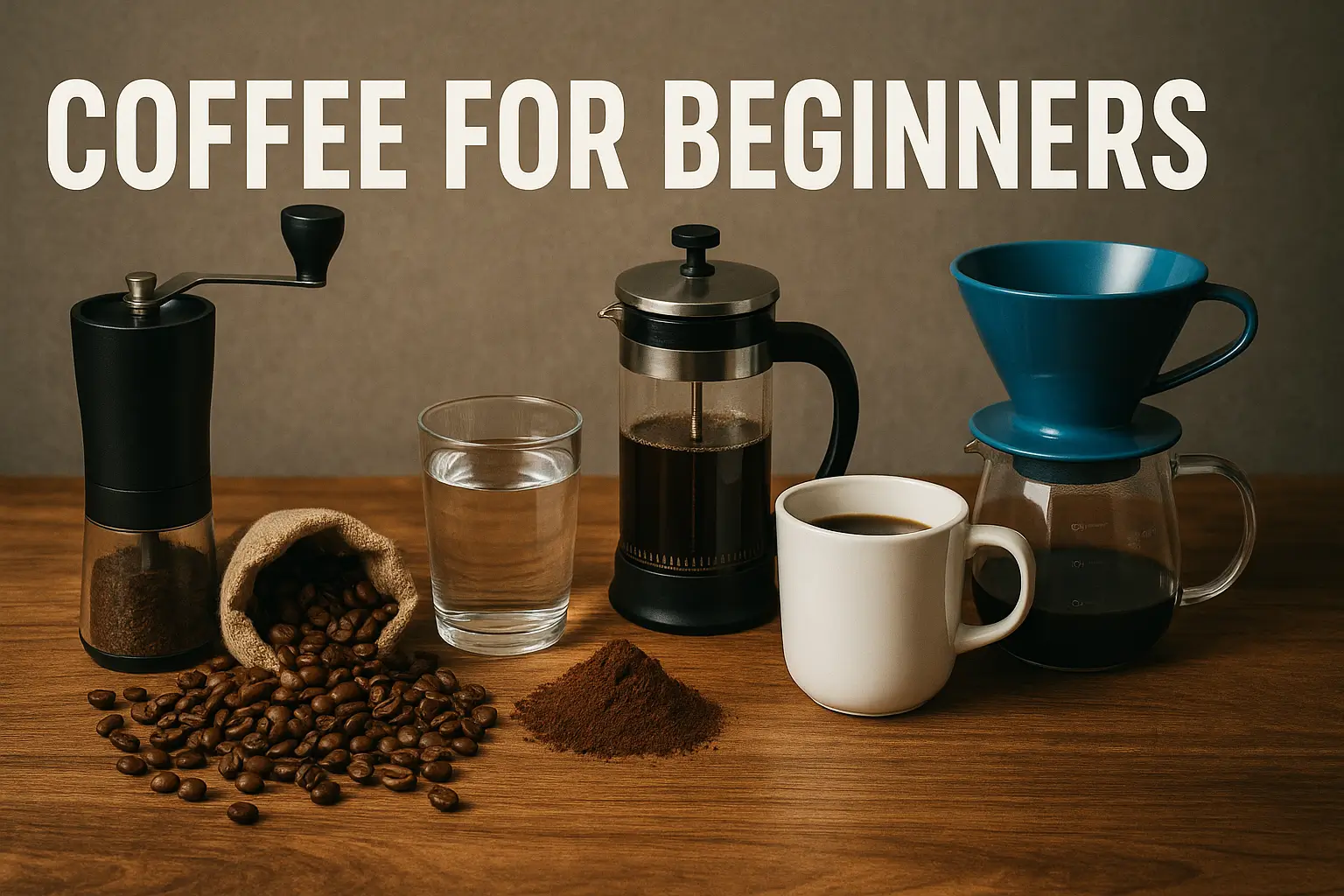Starting your journey into the world of coffee can feel overwhelming. With so many beans, brewing methods, terms, and tools, where do you even begin? The good news is: you don’t need to be a barista or buy expensive equipment to start enjoying great coffee at home. In this beginner-friendly guide, we’ll walk you through the essentials—from choosing beans to brewing your first cup—so you can confidently start sipping smarter.
Why Start Learning About Coffee?
- To save money on daily café visits
- To enjoy better flavor at home
- To explore a new hobby or ritual
- To understand your taste preferences
- To connect with a vibrant global coffee culture
Whether you want to keep it simple or dive deep, this guide will help you start strong.
Step 1: Choosing Your Coffee Beans
Start with fresh, whole coffee beans—not pre-ground supermarket coffee.
What to Look For:
- Roast Date: Choose beans roasted within the last 2–4 weeks.
- Type of Roast:
- Light roast: Fruity, bright, more acidic.
- Medium roast: Balanced, sweet, smooth.
- Dark roast: Bold, bitter, chocolaty.
Bean Types:
- Arabica: More common, smoother, flavorful.
- Robusta: Stronger, more caffeine, more bitter.
As a beginner, go for medium roast Arabica—it’s versatile and easier to enjoy without adjustments.
Step 2: Grinding Your Coffee
Grind size has a huge impact on taste. If possible, use a burr grinder (manual or electric) to control grind consistency.
Common Grind Sizes:
- Coarse: For French press
- Medium: For drip or pour-over
- Fine: For espresso or Moka pot
If you’re buying pre-ground, match it to your brewing method—but be aware it loses freshness faster than whole beans.
Step 3: Choosing Your Brewing Method
Here are a few beginner-friendly brewing methods:
1. Drip Coffee Maker
- Easy and familiar
- Good for multiple cups
- Use medium grind
2. French Press
- Simple and affordable
- Rich, full-bodied coffee
- Use coarse grind
- Brew time: ~4 minutes
3. Pour-Over (e.g., V60, Chemex)
- Manual and meditative
- Clean, bright flavor
- Use medium-fine grind
- Brew time: ~3 minutes
4. AeroPress
- Compact and versatile
- Makes espresso-like or filter coffee
- Use fine to medium grind
- Brew time: 1–2 minutes
5. Moka Pot
- Stovetop espresso-style brew
- Strong and bold flavor
- Use fine grind
Try different methods to discover your favorite style.
Step 4: Master the Water-to-Coffee Ratio
Use a digital scale for consistency (optional but helpful). A standard ratio is:
1 gram of coffee to 15–18 grams of water
Example:
- 20g coffee x 16 = 320g water (for ~2 cups)
Eyeballing is fine to start—just use 1 to 2 tablespoons of ground coffee per 6 oz (180 ml) of water.
Step 5: Use Good Water
Coffee is 98% water, so quality matters.
- Use filtered water if possible
- Avoid distilled or heavily chlorinated tap water
- Ideal temperature: 195–205°F (90–96°C)
Too cold = under-extracted (sour).
Too hot = over-extracted (bitter).
Step 6: Taste and Adjust
Pay attention to how your coffee tastes:
- Too sour or watery: Try a finer grind or hotter water
- Too bitter: Try a coarser grind or lower temperature
- Too weak: Add more coffee
- Too strong: Add more water
Tweak one variable at a time to improve steadily.
Bonus Tips for Beginners
- Buy from a local roaster or online specialty shop for freshness
- Store beans in an airtight container away from light and heat
- Don’t worry about fancy tools—start simple and upgrade as you go
- Try your coffee black first, then adjust with milk or sugar
- Keep a small coffee journal to track what you liked
Common Mistakes to Avoid
- Using old beans (check the roast date!)
- Brewing with water that’s too hot or too cold
- Using the wrong grind size for your method
- Letting coffee sit too long after brewing—it turns bitter
- Storing coffee in the fridge or freezer (moisture is the enemy)
Final Thoughts: Start Smart, Sip Better
You don’t need to memorize coffee encyclopedias to enjoy great coffee. With a few smart steps—fresh beans, proper grind, clean water, and the right method—you’ll be well on your way to barista-level brews at home.
Coffee is both a science and a personal experience. The best cup is the one you enjoy most, made the way you like it. Start experimenting, stay curious, and enjoy every sip.
